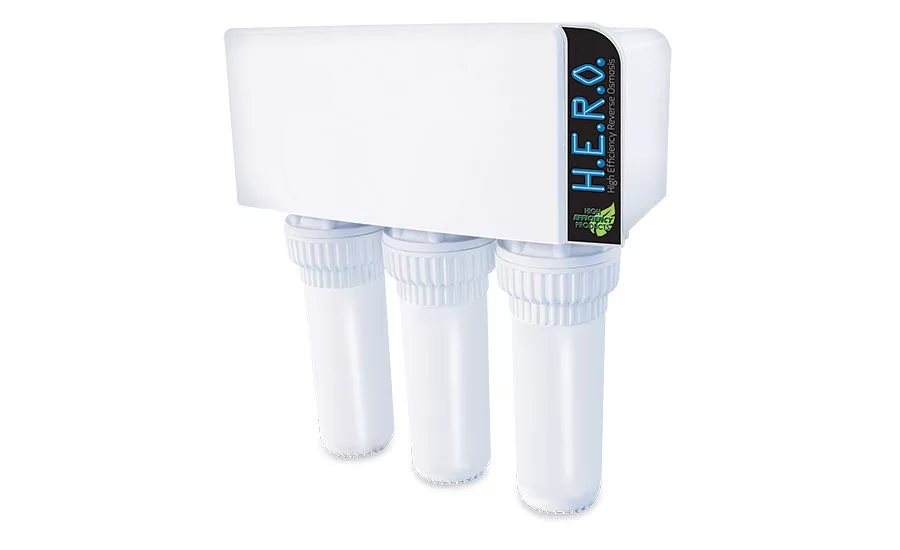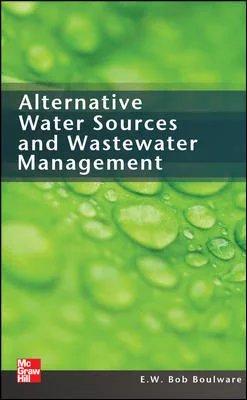Reverse osmosis removes unwanted contaminants, bad tastes and odors from drinking water
Stop wasting customers' water and money.

The innovative Novo H.E.R.O. features a 99.9% recovery rate; wasting virtually no water. All photos courtesy of Canature WaterGroup

The H.E.R.O in an under-sink installation. The front tank is the blending tank used to recycle the reject water in installations that don’t allow for the water to be recycled back to the water inlet or feed line 10’ up from the R.O. All photos courtesy of Canature WaterGroup
As public drinking water quality has come under more scrutiny in recent years, reverse osmosis (R.O.) systems have become increasingly popular in homes and businesses as alternatives to costly bottled water and water delivery services. R.O. systems remove unwanted contaminants, bad tastes and odors from drinking water by forcing municipal or well water through a semipermeable membrane.
While the benefits of R.O.s are generally well-known, one of the lesser known facts is the amount of water that is rejected through the reverse osmosis process. Some traditional R.O. systems reject anywhere from three gallons of water to more than 12 gallons of water for every gallon of purified water they produce.
According to the Environmental Protection Agency (EPA) Water Health Series Fact Sheet, “Reverse osmosis units use approximately three times as much water as they treat, but they are effective in eliminating all disease-causing organisms and most chemical contaminants.”
When you’re selling R.O. systems to your customers, is the amount of wasted water one of the considerations that you point out? If not, it should be. With the right high efficiency system, your customers can feel confident in the quality of water they are drinking and have peace of mind knowing their system is not flushing gallons of precious water down the drain every day.
For some consumers, the cost of needlessly sending water to the drain will motivate them to buy a high efficiency system. For others, finding an environmentally friendly system will be the key decision-making factor. Regardless of their motivation, money or the environment, it’s important that you offer your customers a solution that allows them to save water.
Today, there are several high efficiency R.O. systems on the market that you can offer your customers. While they differ in how they save water, they are all engineered to significantly reduce the water required to produce drinking water. High efficiency R.O. systems are achieving efficiency ratios of 2:1 (reject water to product water), 1:1 and some are producing virtually no reject water at all. All of which are significant improvements from the 12:1 ratio (reject water to product water) of some conventional R.O. systems.
How it works
How do these systems save so much water? This differs by product but some systems are designed to reduce back pressure, a key reason water is rejected during the R.O. process.
Another example is a high efficiency R.O. system that has been designed to reuse 99.9% of the water used in the reverse osmosis process.
Rather than run the reject water produced during the R.O. process to the drain, the reject water is fed back into the inlet or feed water line 10 feet before the R.O. system, or ideally just before the home’s softener or filtration system. In homes built on a slab or homes that require the system to be installed under a sink rather than in a mechanical room, a blending tank is installed. The reject water from the R.O. is fed back into the blending tank and mixed with the inlet water. Whichever installation method is chosen, the system creates a continuous feed of reject water from the R.O. system back into the home or business’s plumbing, sending virtually no water to drain during the purification process.
How does it work? The strategic placement of flow controls, check valves and solenoid valves on the system’s reject or concentrated water line allows the system to maintain enough pressure on the R.O. membrane for the purification process while also creating the pressure needed to run the reject water back into the inlet or feed water line. The end result is a R.O. system that produces high quality water while recycling 99.9% of the R.O. reject water during the process.
This can save a household approximately 7,000 gallons of water per year, based on four people consuming one gallon each per day and the R.O. system wasting five gallons of water per one gallon of drinking water produced.
If you’ve never talked with your customers about the amount of water it takes to produce their R.O. water, you may be surprised by their reaction. One Saskatchewan homeowner was in the market for a R.O. system to purify his drinking water but when it came time to make the purchase, he was shocked when he found out how much water R.O. systems rejected.
“We were set on buying a R.O. system for our home but when we went to buy one, we just couldn’t justify installing a system that wasted so much water. So, we left it,” says Brian Dangstorp. “A few months later someone told us that the Aqua Flo H.E.R.O. recycled the waste water back through our softener and I knew that it was exactly what I was looking for. We’ve been using it for several months are very happy that we took the time to find a system that could give us great drinking water and not waste water in the process.”
If drinking water systems are part of your product offering for your customers and you haven’t done your homework on new high efficiency models, it’s time to start. Consumers are both economically and environmentally savvy, and they have the ability to easily research new products. Don’t lose out on business or referrals because you’re recommending conventional R.O. systems that will leave your customers feeling they’re wasting water and money every day that they use their system.
Looking for a reprint of this article?
From high-res PDFs to custom plaques, order your copy today!






